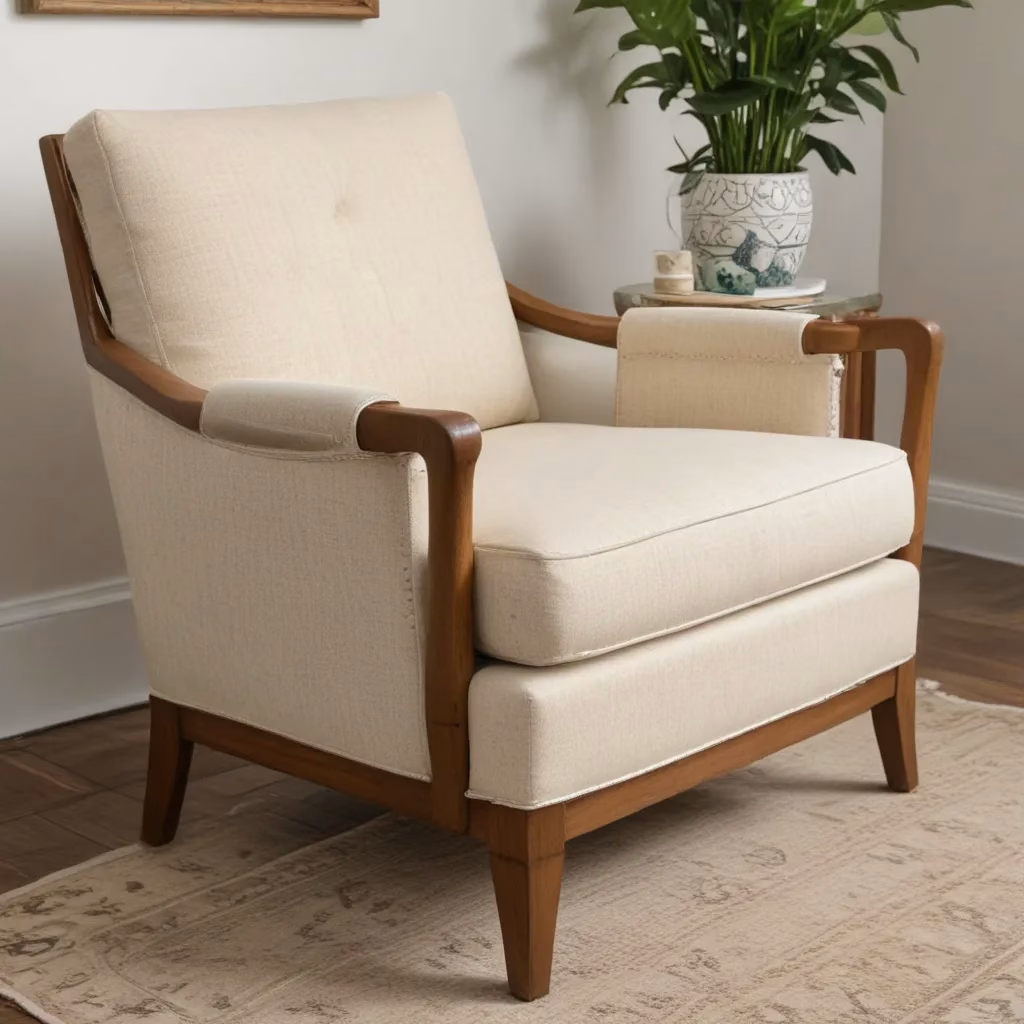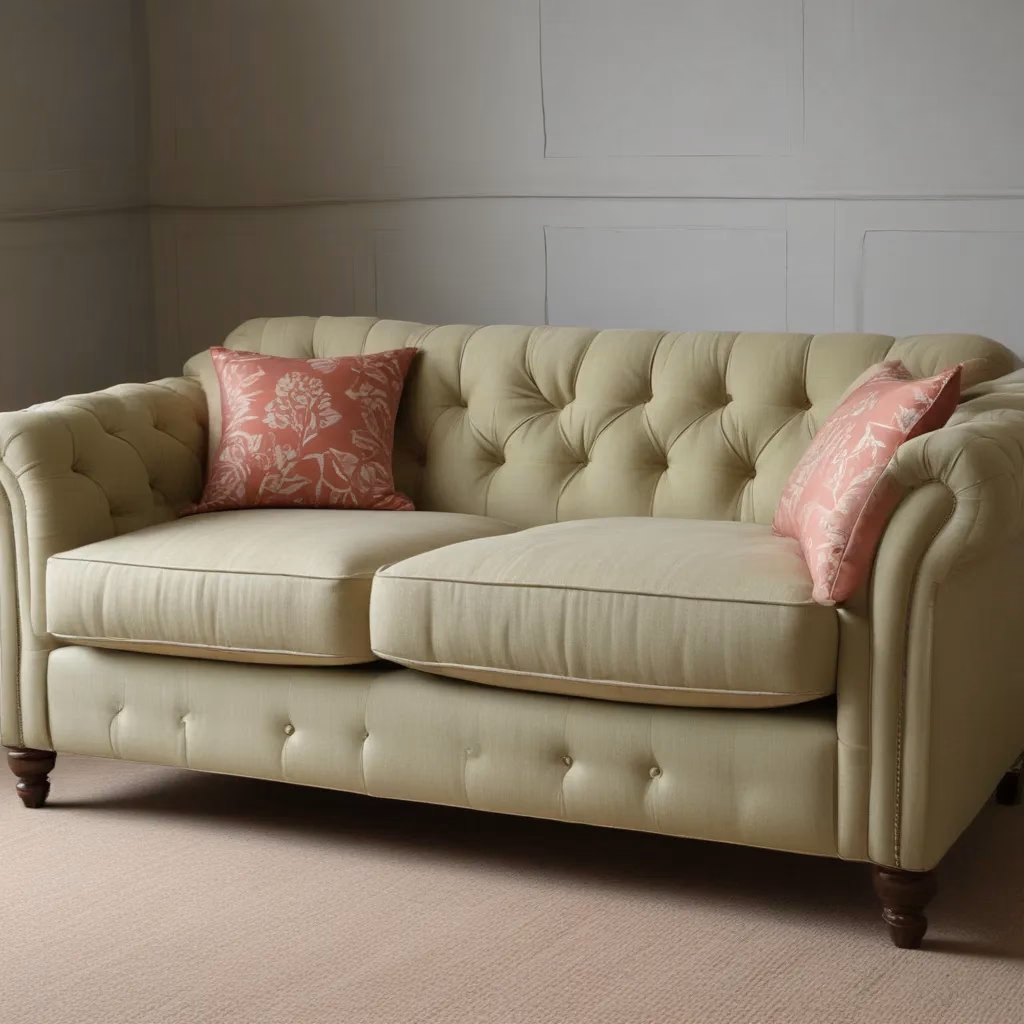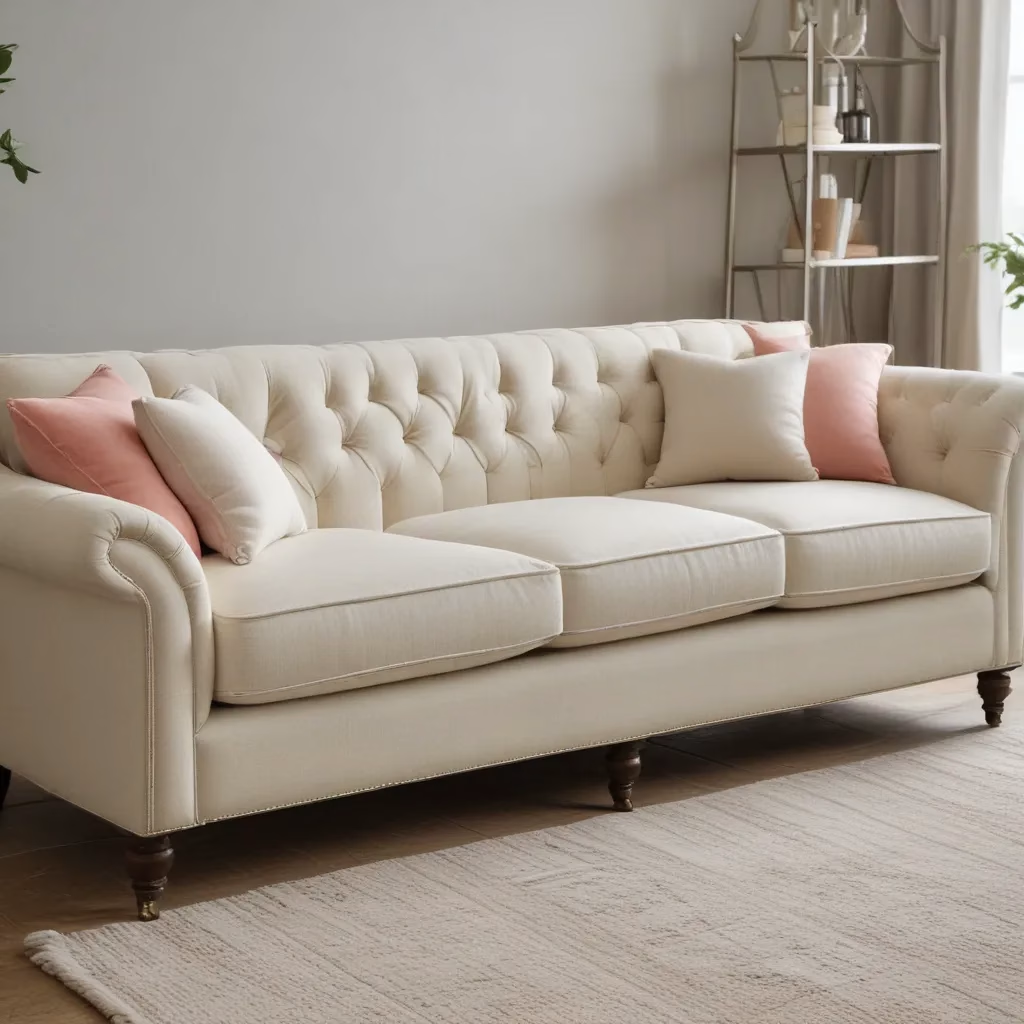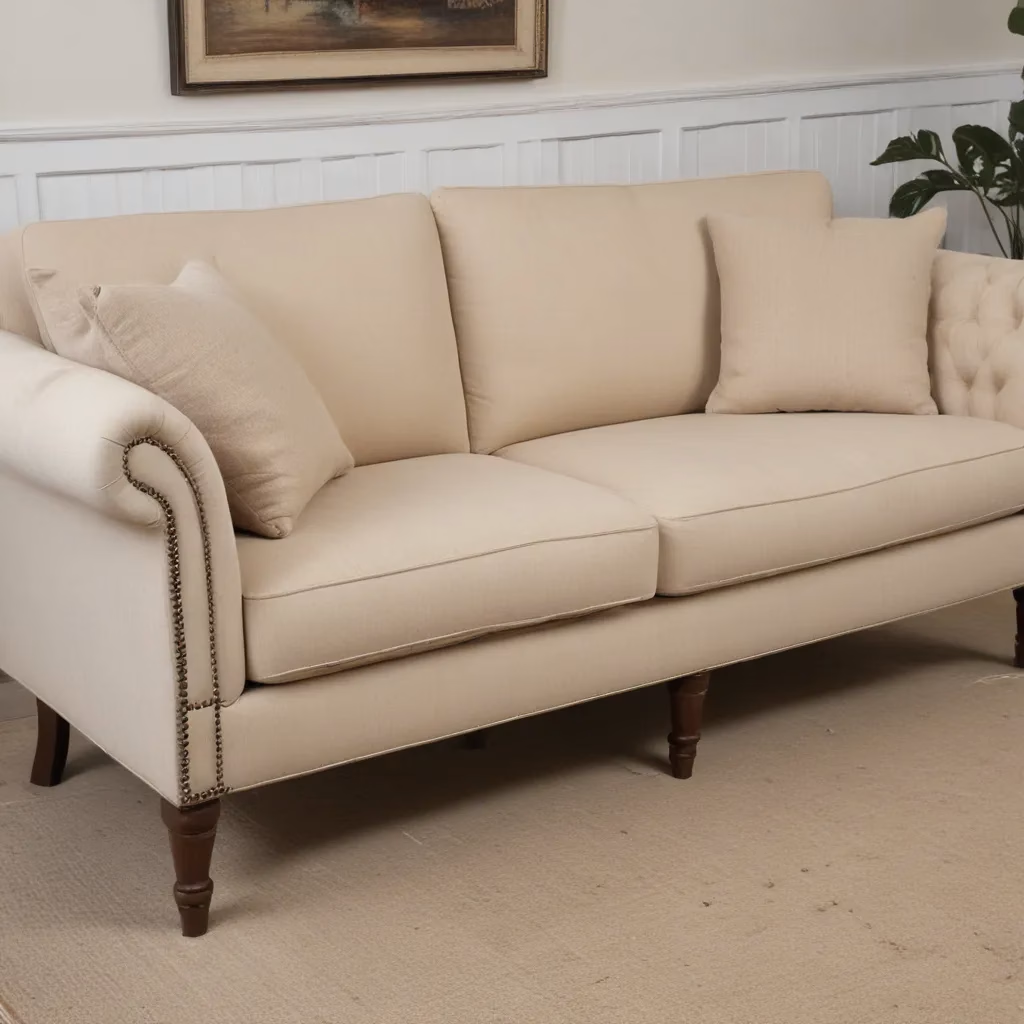
Upholstery Refresh: Reviving Tired Furniture for a New Look
Sofas, armchairs, ottomans, and other upholstered furnishings are the centerpieces of our living spaces, but over time, they can lose their luster. Whether it’s stubborn stains, faded fabrics, or sagging cushions, tired upholstery can make an entire room feel outdated and uninviting. But don’t despair! With a little time and effort, you can revive your beloved furniture and breathe new life into your living areas.
As an experienced furniture consultant and interior design writer for SofaSpectacular.co.uk, I’m here to share my top tips and strategies for refreshing upholstered pieces. From selecting the right fabrics to expert cleaning and maintenance techniques, you’ll learn how to transform your tired furniture into a stylish showcase of comfort and design.
Fabric and Upholstery Selection
The fabric you choose for your upholstered pieces plays a crucial role in both the aesthetic and practical considerations of your living room. When it comes to upholstery, not all fabrics are created equal. It’s essential to understand the unique characteristics and benefits of different fabric types to make an informed decision.
Durable Fabrics for High-Traffic Areas: If your sofa or chairs see a lot of everyday use, you’ll want to opt for fabrics that can withstand the wear and tear. Performance fabrics, such as microfiber, polyester, or a stain-resistant blend, are excellent choices for their easy-to-clean and durable properties. These fabrics can stand up to the demands of busy households with pets or children.
Luxurious Fabrics for a Sophisticated Look: For a more elevated, high-end look, consider natural fiber upholstery, like linen, velvet, or leather. These fabrics offer a beautiful, tactile experience and can elevate the overall aesthetic of your living space. Keep in mind that they may require more specialized care, but the investment can be well worth it for the timeless elegance they bring.
Regardless of the fabric you choose, be sure to coordinate it with the overall color scheme and design style of your living room. A cohesive palette and complementary patterns or textures will create a visually harmonious and inviting space.
Living Room Layout Tips
The way you arrange your upholstered furniture can significantly impact the functionality and flow of your living room. In today’s open-concept homes, thoughtful layout strategies are crucial for creating a balanced and welcoming atmosphere.
Furniture Arrangement for Open Floor Plans: When working with an open floor plan, consider creating distinct seating areas with your sofas and armchairs. Arrange them in a conversational grouping, facing each other to encourage interaction. Incorporate multifunctional pieces, like ottomans or benches, to provide additional seating and storage without overwhelming the space.
Balancing Function and Aesthetics: While it’s important to double-check that your living room layout is practical and comfortable, don’t forget about the visual appeal. Experiment with different furniture placements to find the perfect balance between functionality and aesthetics. For example, you might position your sofa at an angle to create a more dynamic focal point, or use an armchair to anchor a cozy reading nook.
Maximizing Space with Thoughtful Pieces: In smaller living rooms, every square foot counts. Opt for scaled-down furniture that doesn’t overwhelm the space, and consider modular or sectional sofas that can be configured to suit your needs. Incorporate storage ottomans or nesting tables to maximize the functionality of your living area without sacrificing style.
Remember, the key to a successful living room layout is striking a harmonious balance between comfort, flow, and visual appeal. Don’t be afraid to experiment and rearrange until you find the perfect configuration for your space.
Sofa Cleaning & Maintenance
Maintaining the cleanliness and condition of your upholstered furniture is essential for preserving its appearance and extending its lifespan. Regular cleaning and care can make all the difference in keeping your sofas, chairs, and ottomans looking their best.
Regular Upholstery Cleaning Techniques: For routine cleaning, start by thoroughly vacuuming your upholstered pieces, using the appropriate attachments to reach into crevices and remove any accumulated dust or debris. If your sofa or chairs have removable cushion covers, be sure to wash them according to the manufacturer’s instructions, typically in a gentle cycle with mild detergent.
Spot Cleaning and Stain Removal: Inevitable spills and stains are a fact of life, but with the right approach, you can tackle them effectively. Begin by blotting the affected area with a clean, white cloth to absorb as much of the spill as possible. Then, use a mild, water-based upholstery cleaner or a solution of warm water and a small amount of dish soap to gently scrub the stain. Avoid scrubbing too vigorously, as this can damage the fabric.
Extending the Life of Upholstered Furniture: To keep your upholstered pieces looking their best for years to come, establish a regular cleaning and maintenance routine. This may include professionally deep-cleaning your furniture every 12-18 months, depending on usage and wear. Additionally, rotate and fluff your cushions regularly to maintain their shape and prevent uneven wear.
By taking the time to properly care for your upholstered furniture, you’ll not only maintain its visual appeal but also extend its lifespan, saving you the hassle and expense of premature replacements.
Styling for Comfort & Aesthetics
Reviving tired upholstery is about more than just cleaning and restoring the fabric. It’s also an opportunity to enhance the overall comfort and visual appeal of your living room. By carefully styling your sofa, chairs, and other upholstered pieces, you can create a space that is both inviting and visually striking.
Layering Textiles and Accessories: Incorporate a variety of textures and patterns to add depth and visual interest to your upholstered furniture. Layer throw pillows in coordinating or contrasting hues, and drape cozy blankets or throws over the arms or backs of your sofas and chairs. These tactile elements not only elevate the aesthetic but also contribute to the overall sense of comfort and coziness.
Incorporating Accent Pillows and Throws: Accent pillows and throws are versatile tools for refreshing the look of your upholstered furniture. Experiment with different sizes, shapes, and patterns to create a visually dynamic and balanced arrangement. Consider swapping out your pillow covers seasonally to keep your living room feeling fresh and on-trend.
Balancing Form and Function in Décor: When styling your upholstered pieces, remember to strike a balance between form and function. Prioritize comfort and practicality, but don’t sacrifice style. Incorporate decorative accents, such as trays, vases, or sculptural pieces, to elevate the visual appeal of your living room without sacrificing its livability.
By thoughtfully layering textiles, accessories, and décor elements, you can transform your revived upholstered furniture into a harmonious and visually captivating centerpiece of your living space.
Furniture Buying Guides
When it comes to investing in new upholstered furniture, it’s essential to do your research and make informed decisions. From evaluating construction quality to determining the perfect size and fit, there are several key factors to consider.
Evaluating Sofa Construction and Quality: The frame, cushions, and overall construction of a sofa or chair can have a significant impact on its durability and comfort. Look for solid wood or kiln-dried hardwood frames, which are less prone to warping or cracking over time. High-quality foam or down-filled cushions will provide superior support and comfort compared to lower-density fillings.
Measuring for the Perfect Fit: Before making a purchase, carefully measure your living room to double-check that the new upholstered furniture will fit seamlessly. Consider the dimensions of the space, accounting for doorways, pathways, and other obstacles. Opt for scaled-down or modular pieces if you have a smaller living room, and choose proportionate sizes that balance visual appeal and functionality.
Budgeting for Furniture Investments: Upholstered furniture can be a significant investment, so it’s essential to establish a realistic budget and understand the value proposition of different price points. While high-end, luxury pieces may come with a higher price tag, they often offer superior craftsmanship, customization options, and longevity. Explore financing or payment plans if needed, and factor in delivery and assembly costs when finalizing your budget.
By carefully evaluating construction quality, measuring for the perfect fit, and setting a realistic budget, you can confidently select upholstered furniture that will not only revive your living room but also stand the test of time.
Breathe new life into your living spaces by refreshing your tired upholstery. From selecting the right fabrics to mastering expert cleaning and styling techniques, this comprehensive guide has equipped you with the knowledge and strategies to transform your furniture into a showcase of comfort and design. Remember, reviving your upholstered pieces is about more than just appearances – it’s an opportunity to create a living room that truly reflects your personal style and enhances the overall livability of your home. So, dive in, get creative, and enjoy the process of revitalizing your tired furniture for a new look that will delight you for years to come.
Tip: Rotate cushions regularly to maintain even wear



